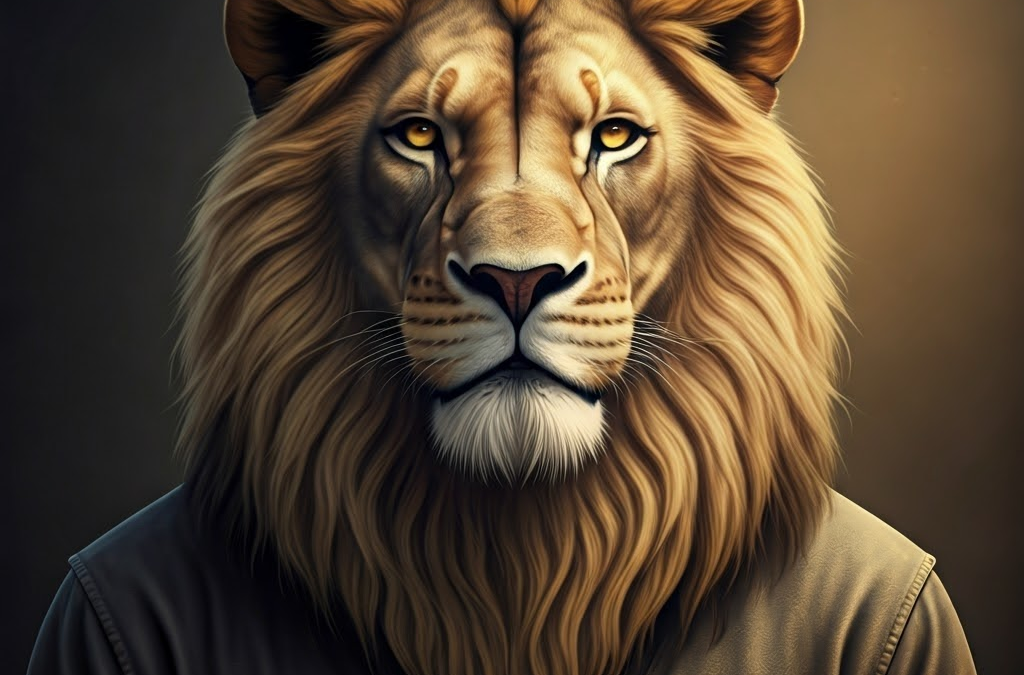Lion
The Lion (Panthera leo): Majestic King of the Savannahs
Introduction
The lion, often called the “king of animals,” is one of the most iconic big cats on our planet. Recognizable by its majestic mane (in males) and powerful roar, this charismatic predator symbolizes strength and nobility in many cultures.
Physical Characteristics
- Scientific name: Panthera leo
- Length: 170-250 cm
- Height at shoulder: 90-110 cm
- Weight: 120-250 kg (males), 85-180 kg (females)
- Life expectancy: 10-14 years (wild), up to 20 years (captivity)
The lion possesses a powerful, muscular body perfectly adapted for hunting. Its short, smooth coat, mainly golden tawny to light brown in color, allows it to blend into the savannah grasses. The male’s most distinctive feature is its mane, which varies in size and color depending on the individual, region, and environmental conditions.
Its adaptations for predation are remarkable:
- Powerful jaws (biting force of approximately 650 psi)
- Canines that can reach 7 cm
- Retractable claws measuring up to 38 mm
- Exceptional night vision thanks to the tapetum lucidum
Habitat and Distribution
Today, lions are found primarily in two regions:
- Sub-Saharan Africa: Mainly in reserves and national parks in East and Southern Africa
- India: A unique subspecies, the Asiatic lion (Panthera leo persica), in the Gir Forest
Although associated with savannahs, lions adapt to various environments: grasslands, wooded areas, and semi-desert regions, provided they find sufficient prey and water sources.
Social Behavior and Reproduction
Unlike most felines, the lion is a highly social species living in groups called “prides,” typically composed of:
- 2 to 6 related females
- Their cubs
- 1 to 4 dominant males
This social structure offers advantages for collective hunting, territory defense, and raising young. Lionesses, the main hunters, adopt specific roles during coordinated hunts.
The reproductive cycle includes:
- Female estrus every 3-4 months
- Frequent mating (up to 40 times per day)
- Gestation of about 110 days
- Litters of 2 to 4 cubs
- Communal rearing of young, including allomaternal nursing
Ecological Position and Conservation
As a super-predator, the lion occupies a key position in regulating herbivore populations and maintaining the balance of savannah ecosystems.
Unfortunately, the species is classified as “vulnerable” on the IUCN Red List. Wild populations have declined by more than 40% over the last three generations, mainly due to:
- Habitat loss
- Human conflicts
- Poaching
Fascinating Facts
- A lion’s roar can be heard up to 8 km away
- Lionesses carry out about 90% of hunting activities
- Lions can sleep up to 20 hours per day
- Cubs are born with spots that fade with age
- In some regions like Lake Manyara in Tanzania, lions can be observed climbing trees
This majestic feline continues to fascinate humanity and represents an important symbol of African wildlife that various conservation initiatives strive to protect for future generations.
August 23, 2025
shark
🦈 The Shark – Information Sheet 📌 Common name: Shark 🧬 Scientific name: Various species (e.g., Carcharodon carcharias for the great white shark) 🐾 Family: Chondrichthyes (cartilaginous fishes) 🌍 Habitat: Oceans and seas around the world, from shallow coastal waters to...
The Crow: Intelligence and the Mystery of the Black Plumage
The Ultimate Guide to Eels : Characteristics , Habitat …
The Ultimate Guide to Eels: Characteristics, Habitat, and Conservation Meta Description: Explore everything about eels—their unique biology, diverse habitats, migration secrets, and conservation status. Learn how to identify eels and why they're endangered....





0 Comments